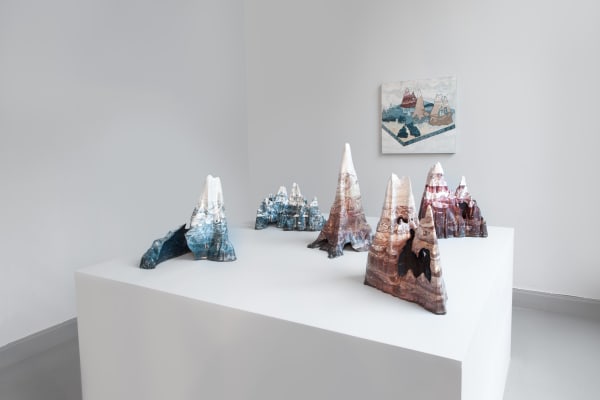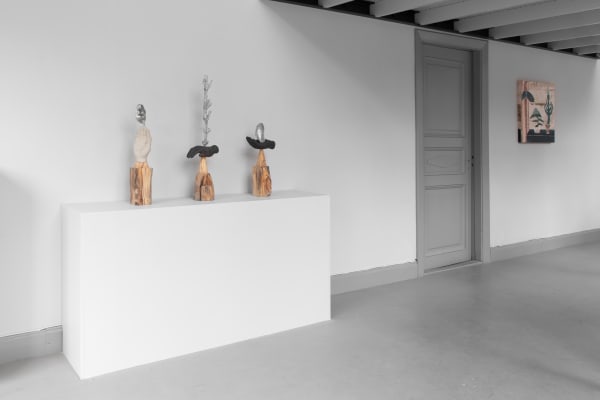Hilda Hellström | I do spend time in nature
Nature and the natural
Hilda Hellström spends time in nature, just like many others. The exhibition title, "I do spend time in Nature", refers to a shift in our history, where we as humans separated ourselves from nature. If we previously were a part of a nature, that we tried to "deal" with, we are now progressively taming it, and instead "visits" nature for aesthetic purposes. We are in a constant struggle with nature, with an ambivalence before it's function in our human world. We prefer it calm and cultivated but benefit from it's resources created during violent processes.
But it's not only in this shift where Hellström's interest lies. In her partly sentimental dialogue with nature, she tries to understand and learn from it's constant processes and extreme forces. She digs deep into the definition "nature", a way to take on reality. Though she deals with it's aesthetic and signification, she puts her emphasis on the power of man, not the power of nature. Her shapes and symbols takes us somewhere far away, inside a cosmos where we are the creator of places, objects and narratives. Places that exists under an undefined time and in an eternity. Representations of non-existing yes simultaneously existing realities. Constant and changeable at the same time.
THE Artifact AND THE Artificial
We can also see her interest for human impact in her choices of materials, where she tries to eliminate a traditional hierarchy of value and boundaries between materials. Traditionally the slow natural materials, that were created during a long process, are seen at the top whereas the artificial and imitating materials are seen at the bottom. Glass, as the first synthetic material, is placed somewhere in the middle of that hierarchy. From methodical craftsmanship, Hellström works with synthetic materials to make them look exclusive, slow, natural materials to try to make them look artificial, hobby classified metals and plastics. This, in combination with some of our most traditional materials and techniques. Sometimes she changes roles with nature plays with the understanding about who has created what or what created who, or maybe what created what.
THE OBJECTS AND THE MATERIALITY
Mount I-V and Landscape Still Life I-III are made of Jesmonite, a polymer modified plaster that she's been working with over the past several years. Together with its inherent properties she has, like a bonsai, tamed the material into it's shape and colour. Healed Fractures are objects in anthracite, almost gilded with Jesmonite. Similar to the Japanese Kintsugi technique, where cracks and broken ceramic objects are mended with a gilded lacquer, she puts the unnatural Jesmonite in the cracks of the broken shapes of anthracite.
The Iceberg diptyque is an idealized depiction of two icebergs, a natural occurrence most people are familiar with but few have actually seen. The icebergs, one floating of water and one that has sunk, are encased in clear resin. A technique that in a similar way is used for encapsulation of insects, that you would find in a natural history museum. In Handpoems, hands are balanced, that are balancing something else, in surreal compositions. Here we see the human hand as a tool, a body part as an instrument. The hand of the creator. They also show a sentimental and tender relationship to nature, where found, natural objects are elevated in the silver-shining alloy pewter. In a reality that always is subjective, and where truth is a question of interpretation, Hellström ponders about aesthetic experiences. She says that in an increasingly abstract existence, the aesthetic experiences that you gain in nature, could be the closest we could come to a collective and objective truth.










